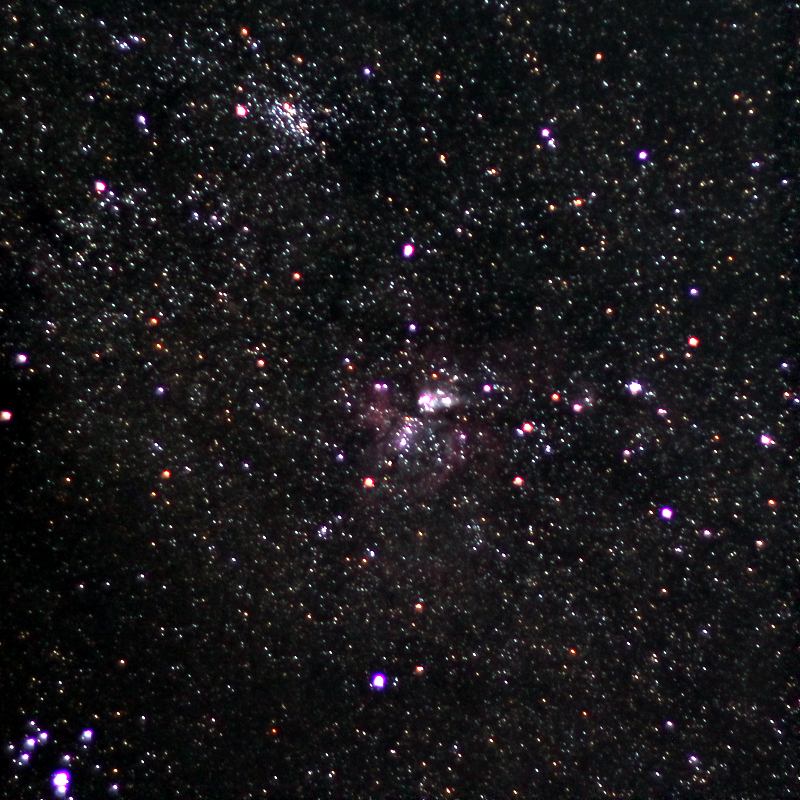Just uploaded a new gallery of pictures taken during a massive thunderstorm we had here on Monday night December 1st, 2014.
Also a short video: (close strike at about 1:04!)
Quick and dirty stack from this weekends camping trip:
 n Car nebula (NGC 3372 - C92)
10 x 10sec ISO 800 50mm F2.0
n Car nebula (NGC 3372 - C92)
10 x 10sec ISO 800 50mm F2.0
10 Images of 10sec exposures, ISO 800, 50mm @ F2.0
Campsite was Yalwal NSW Camping grounds next to Danjera Dam.
Cheers.
On a recent trip to Hawaii I went to a star party hosted on the northern part of Hawaii at the Dillingers Air Base.
One of the main astronomical items I wanted to see while in the northern hemisphere was the Andromeda Galaxy. Since it is very low on the horizon where I live and unless I find a tall viewing point with clear views north I don’t get the chance to see it yet alone take images.
At the star party I did get to see it, along with a fantastic view of the night sky, it was so clear the number of stars visible was amazing.
As for imaging it, all I had was my DSLR (Canon 550D) with a 50mm f1.8 lens on a basic tripod. I took quite a few images but many had star trails from too long exposure with no tracking so I managed to pick about 16 reasonable frames, cropped them down and stacked them. The result was pretty ok considering:
If I’d known it’d work so well I’d have taken lots more and stacked for a better result.
Still inspiring for me.
Need to process all the other photos from the trip and add them to a gallery…
Cheers.
Hi!
Another long delay, but this time the telescope project has been totally remade.
All the framework has been machined out of Aluminum sheets making the unit much more rigid without being too heavy, plus re-sized to allow for a larger telescope in the future (the current 4.5″ mirror isn’t all that exciting… ). I’ve also used secondary gearing so I get more torque out of the motors as well as better accuracy – I now get 0.0018 degrees per step.
Electronics are based around the NXP LPCeXpresso dev board using an lpc1769 ARM processor. The NXP chip controls 3 separate motor circuits gated for 12V drivers ( Azimuth, Altitude and Focus) all timed off separate timers so each can be individually speed regulated. Communication with the PC is by a Bluetooth serial module and the board also drives a 132×132 pixel color LCDmodule to show tracking details. This chip runs at 120MHz and has plenty of speed to keep tracking and control as smooth as possible.
I’ve mostly programmed the NXP to emulate the SynScan AltAz GOTO mount commands as well as a few of my own custom for other work. This command set allows easy control via Stellarium software for field work.
This video shows the mount going from flat North to M48 then to the Moon via PC, then I click the Home button on the hand controller at the end.
This video is the same but from the software viewpoint.
Just need to weatherproof the electronics inside a box and add a stable mount. (then get a real telescope for it… )
Until next time!